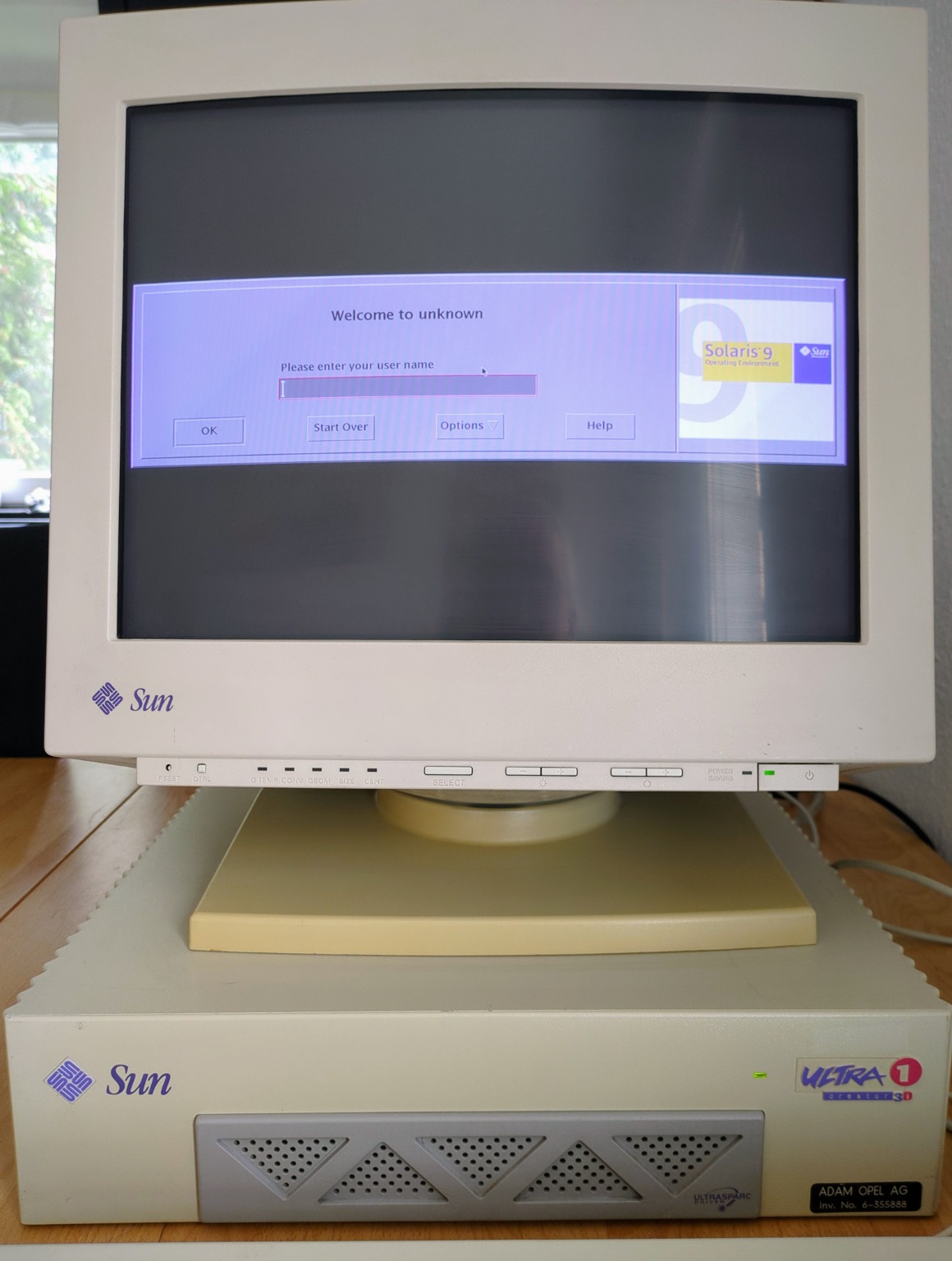Sun Ultra 1E
Gallery

Image of OSfOM.org Collection's Sun Ultra 1E.
Technical Specifications
| Model: | Sun Ultra 1E |
|---|---|
| Codename: Platform: |
Electron (A12) sun4u |
| Processor: Math Copro: |
UltraSPARC I (in CPU) |
| Clock Speed: | 143, 167, 200 MHz |
| RAM: | |
| Graphics: | |
| Operating System: | |
| Introduced: | November 1995 |
| Dealer price (net): |
The Sun Ultra 1E: Enhanced Graphics Power As part of the initial launch of the Ultra series in November 1995, Sun Microsystems also introduced variants of the Ultra 1 designed for specific needs. Among these was the Ultra 1E (often identified by Sun service code A12 or internal codename "Electron"), which offered enhanced capabilities, particularly in the realm of graphics and I/O, compared to the standard Ultra 1. While sharing the same core UltraSPARC I processor running at speeds like 143 MHz, 167 MHz, and 200 MHz, the Ultra 1E differed from the standard Ultra 1 (A11) in its expansion and connectivity. The Ultra 1E featured two SBus slots instead of three but crucially added a dedicated UltraSPARC Port Architecture (UPA) slot. This UPA slot was specifically designed to accommodate Sun's high-performance Creator series graphics framebuffers, making the Ultra 1E a powerful platform for demanding visual workloads like 3D modeling, animation, and scientific visualization. In addition to the graphics focus, the Ultra 1E also came standard with Wide SCSI and Fast Ethernet (100Base-T), providing faster storage access and network connectivity compared to the standard Ultra 1's narrow SCSI and 10Base-T Ethernet. These enhancements made the Ultra 1E a more capable machine for data-intensive and networked environments. Running the 64-bit Solaris operating system, the Ultra 1E was targeted at professionals in fields requiring both significant processing power and advanced graphics capabilities. It represented Sun's modular approach to the Ultra line, allowing customers to choose configurations optimized for their specific applications. The Ultra 1E stands as a notable variant in the early UltraSPARC era, highlighting the importance of high-performance graphics and I/O in Sun's strategy and providing a powerful 64-bit platform for visualization professionals.